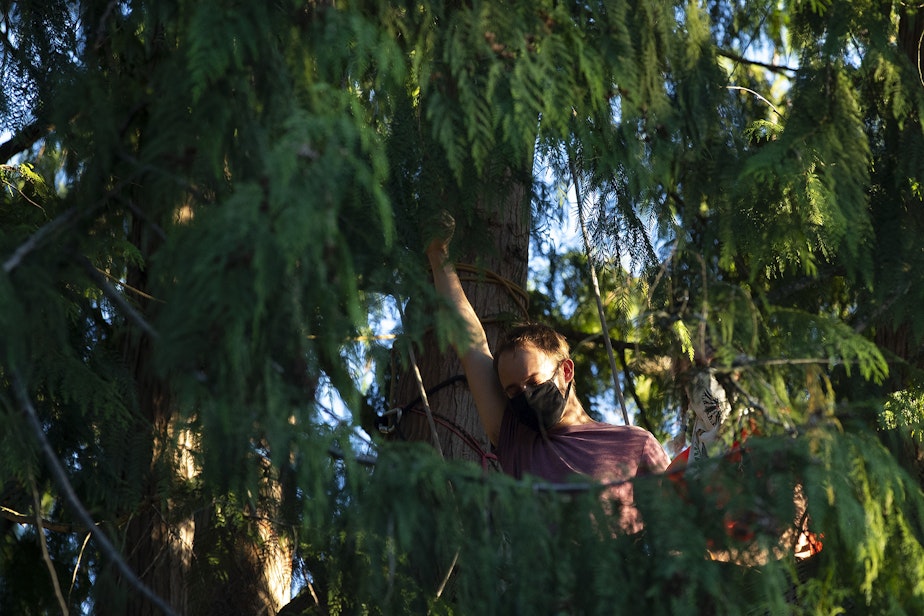New deal saves Seattle's celebrity tree, 'Luma'

The tree in Seattle's Wedgwood neighborhood that activists have named Luma, and which prompted a summer movement to save it, will be preserved.
“This is exactly what we’re looking for — tribal-led resolution on protecting this elder tree," said Droplet, an activist, from within the tree's branches, on Wednesday morning. "But also reforming our laws and regulations so there’s never a situation where an elder tree like this is sacrificed for convenience.”
The owner of the property, the lender for the project, and the builder have begun work with the Snoqualmie Tribe to preserve the tree as a "culturally modified tree," a term Washington uses to note and preserve trees of significance.
"It is critical that culturally modified trees like Luma are respected and preserved,” said Jaime Martin, with the Snoqualmie Tribe. “We are excited Legacy Group Capital is making this commitment to cultural preservation and we look forward to working with them on developing a process for proactive CMT assessment during their feasibility process. Tribal leadership also looks forward to working with city leaders on their commitment to develop legislative protections and improved processes for identifying these threatened cultural resources.”
Sponsored
"Luma" is the name activists gave the western redcedar after climbing into its branches in July, and camping out, preventing builders from cutting down the tree. Crowds gathered around the protest, which sought to highlight Seattle's diminished tree canopy. The 80-foot, double-trunked tree qualifies as an "exceptional" tree under the city's code, based on its size and history, but that status didn't prevent plans for its removal.
The Wedgwood property was reportedly slated to be redeveloped to accommodate as many as six housing units. Owners initially did not plan to cut down the tree, but revised plans called for the axe.
As pushback against the plan mounted, the Snoqualmie Tribe weighed in, calling for the western redcedar to be considered as a culturally modified tree. Such trees have been used by Indigenous tribes for various reasons. The way the nearly 200-year-old redcedar had once been pruned indicated that it was used to mark a trail system that predated the city, and settlers in the area.
Since then, the various parties have met to find a solution to the controversy, including Legacy Group Capital (the lender), Rock House Builders (the property owner), Bad Boyz GC (the builder), and the Snoqualmie Tribe. In a statement, Legacy said it was first notified about the tree's significance on July 21. That prompted a meeting on Aug. 7. The solution, according to Legacy, is to divide the property up. Three housing units will go on one side, and one or two housing units will be built on the other half. The original plan called for six units on the single property.
Legacy adds that it wants to now "to develop a stronger relationship with the Tribe, as we'll be relying on their expertise to identify [culturally modified trees] moving forward."
“Trees and housing are both critically important to Seattle’s future,” Seattle Mayor Bruce Harrell said in a statement. “Working together, I’m grateful for the collaborative approach embraced by the owner, builder, lender, and Snoqualmie Tribe to reach a solution preserving this culturally modified tree and allowing for much needed housing. We look forward to continued partnership with Tribes and regional Native leaders to identify and protect culturally modified trees in our city.”
Sponsored
RELATED: For the first time in generations, the Snoqualmie Tribe has land
Droplet, the activist in the tree, said that a larger goal should be to strengthen Seattle’s new tree regulations, and make thousands of trees eligible for the highest level of protection, rather than the few hundred with Tier 1 status, currently.





